Library House was designed by Fria Folket + Hanna Michelson in Stockholm, Sweden, to meet the requirements of a ceramicist and a lawyer in need of a house capable of holding their extensive book collection and providing them with spaces for work and creative activity.
Having different needs and rhythms and simultaneously enjoying each other’s company and presence – the couple wanted a house where they could find peace to work individually without entirely screening each other off. In response to these requests, the architectural Studio “Fria Folket” composed a house organized around a library in the shape of a book gallery framing a small courtyard.
The house is situated on the edge of a sparse pine forest by Lake Voxsjön, right next to the family ́s original home and garden, Villa Skoghem, a forester ́s residence from the early 20th century. While the north, east, and west facades are pretty close to the surroundings with just a few carefully selected outlooks, the south side opens toward the lake.
Four gable-roof buildings complement the centrally located library, each solving its specific part of the program following the adjoining section; the East building – Cooking and gardening, and the South building – Arts and crafts. The West building – Law, science, and music, and the North building, accommodating the areas for rest and recovery – Meditation, and self-development and linking the volumes together – thematically and systematically – the library functions as the core and bloodstream of the project.
The four houses are organized in the order of the sun’s movement with the starting point of the house, i.e., the entrance, in line with the starting point of the day, in the east. Moving through the house, the sun finally rests, just like the house, in the north.
The degree of privacy follows the same loop from the most social spaces, hallway, and kitchen to the most private spaces at the end of the circle. The clockwise movement is encouraged by the placement of the windows providing views towards the surroundings when walking clockwise instead of facing the closed bookcase walls when moving counterclockwise.
Four doors, one in each corner of the book gallery, offer access to the courtyard from all parts of the house, making it easy to move inside and outside.
The square-shaped solid boundary of the bookcases and the transparency of the courtyard’s glassed framing amplify the library’s perception of extending beyond the climate shell, programming the courtyard into an open-air reading space. A room is defined by its purpose rather than its physical limits.
Considering the library’s broad color spectrum, the interior’s materials are few and austere. Against the blond palette of white, whitewashed pine, and natural pine, the ceramic tiled floor stands out with its warm brick-red color.
In pursuit of sustainability, the house has been customized to the families existing furniture to reduce the need to buy new and replace. Consequently, the iconic Ikea bookcase” Billy” has played an essential part in determining the measures of the house being the holder of the existing library.
With the further intention of reducing the environmental footprint, the walls and roofs have been constructed free from plastic and insulated with flax fibers according to the vernacular traditions of the area. The facade is clad with untreated heart pine from a local sawmill, and the concrete-free foam glass foundation is made from recycled glass. The rainwater from the aluzink-clad roof is collected in an underground tank providing the greenhouse with water.
In line with old Nordic building traditions, one of the studios has been constructed to be disconnected from the rest of the house regarding heating. This provides the option to downsize the home when the temperature drops.
A certain sense of rhythm pervades the house as the grid of the construction articulates in the load-bearing glass partitions manufactured at local window carpentry. Like barlines on a piece of sheet music, the posts divide the bookshelves like beats in a measure.
Like what you’re reading? Subscribe to our top stories.





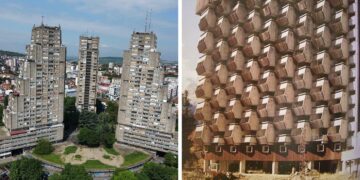
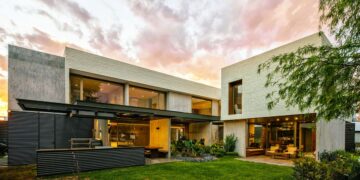
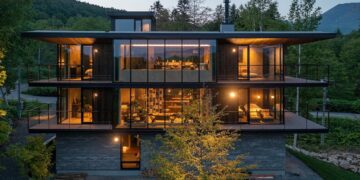
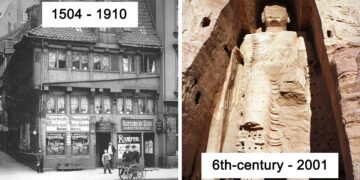





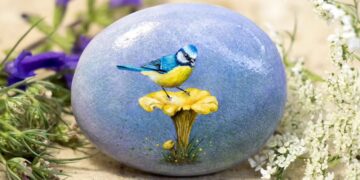


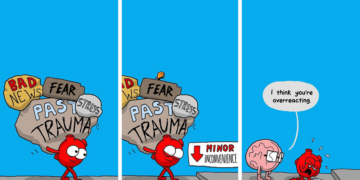



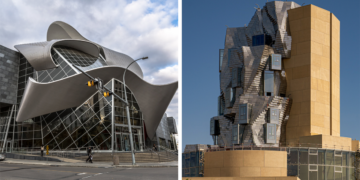

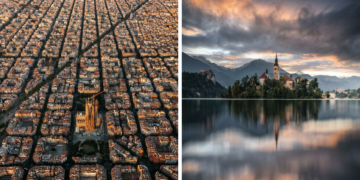
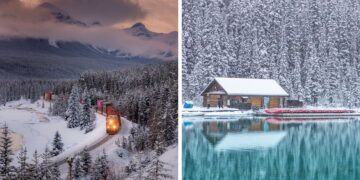


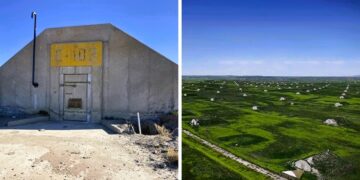
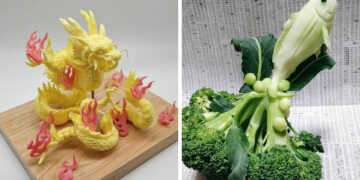
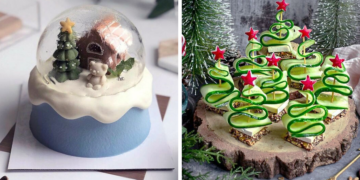
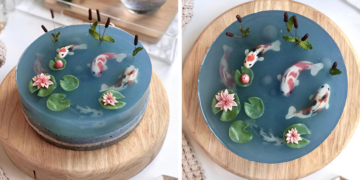

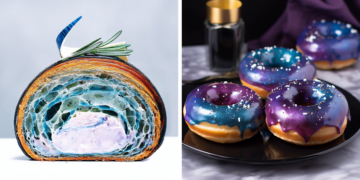
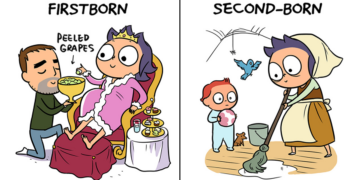
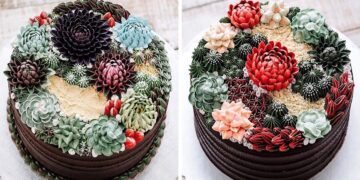
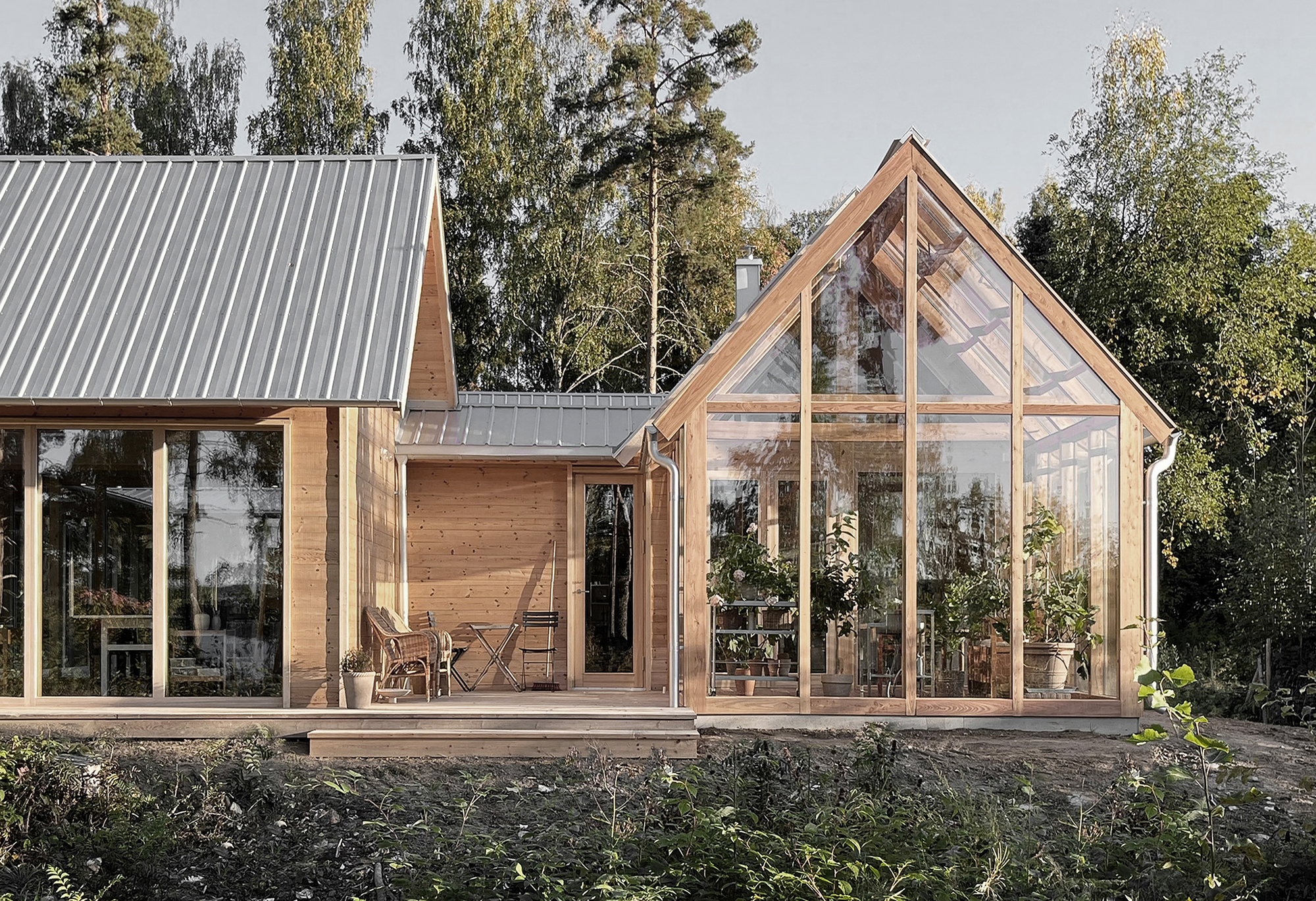
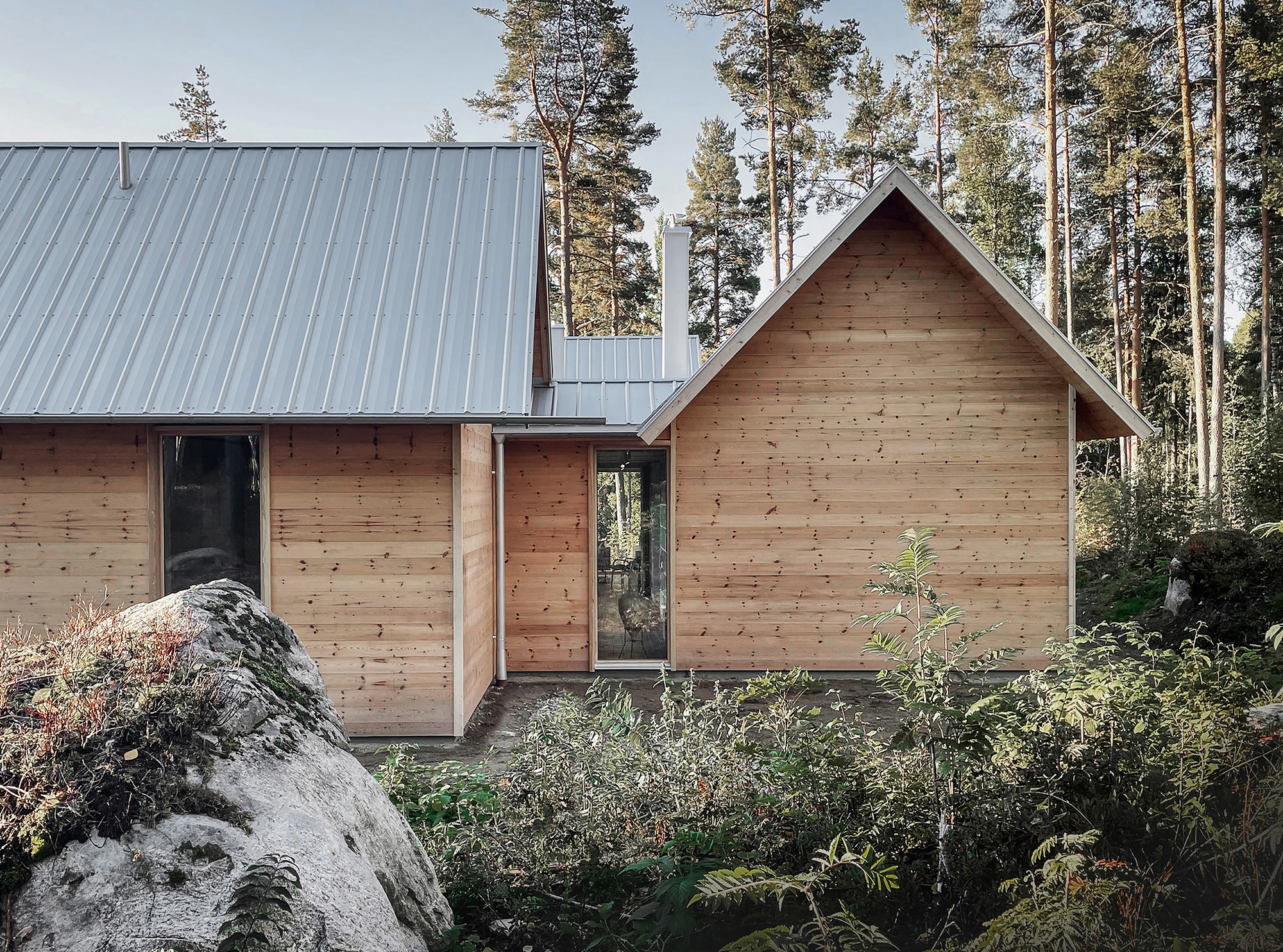
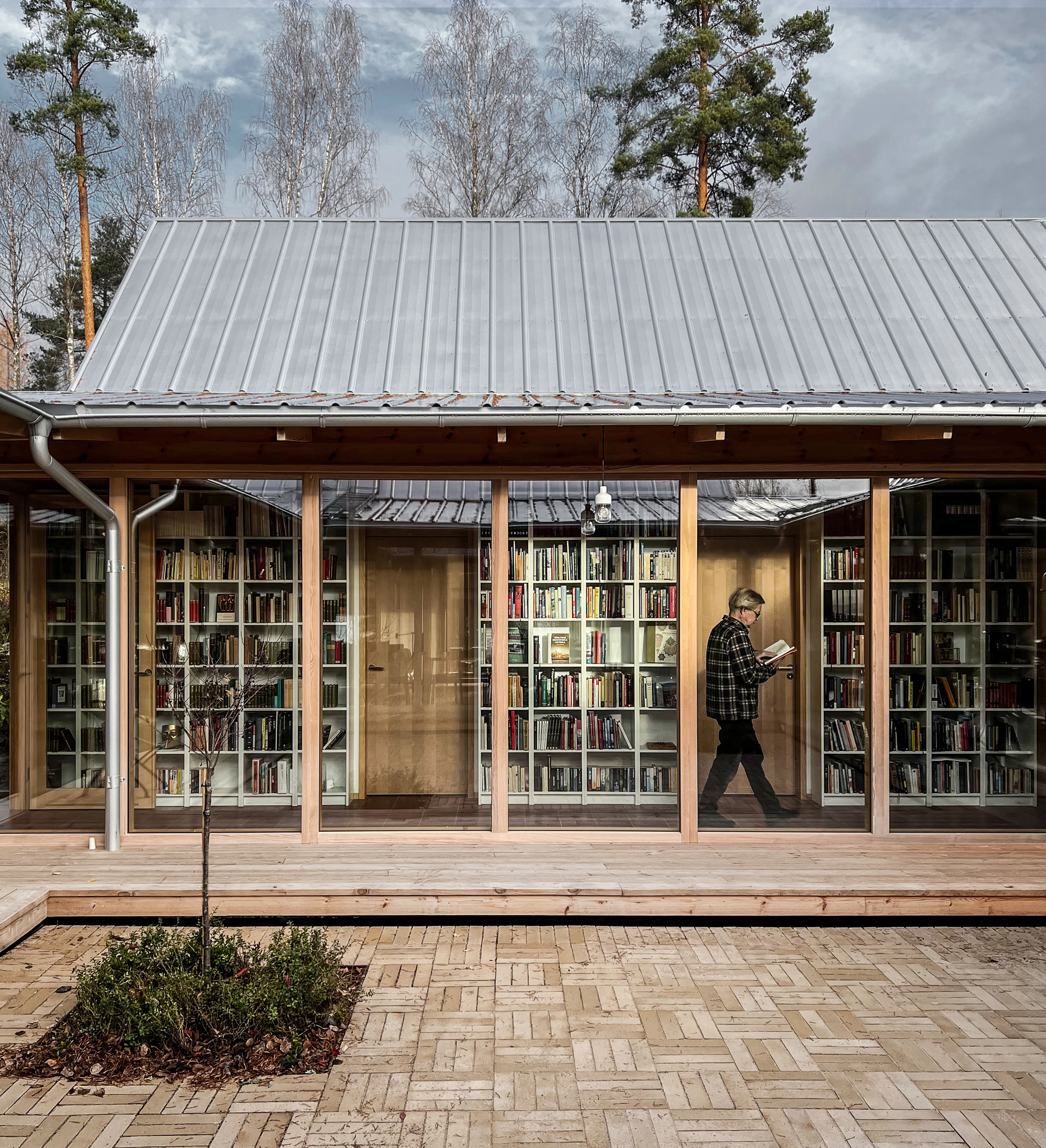
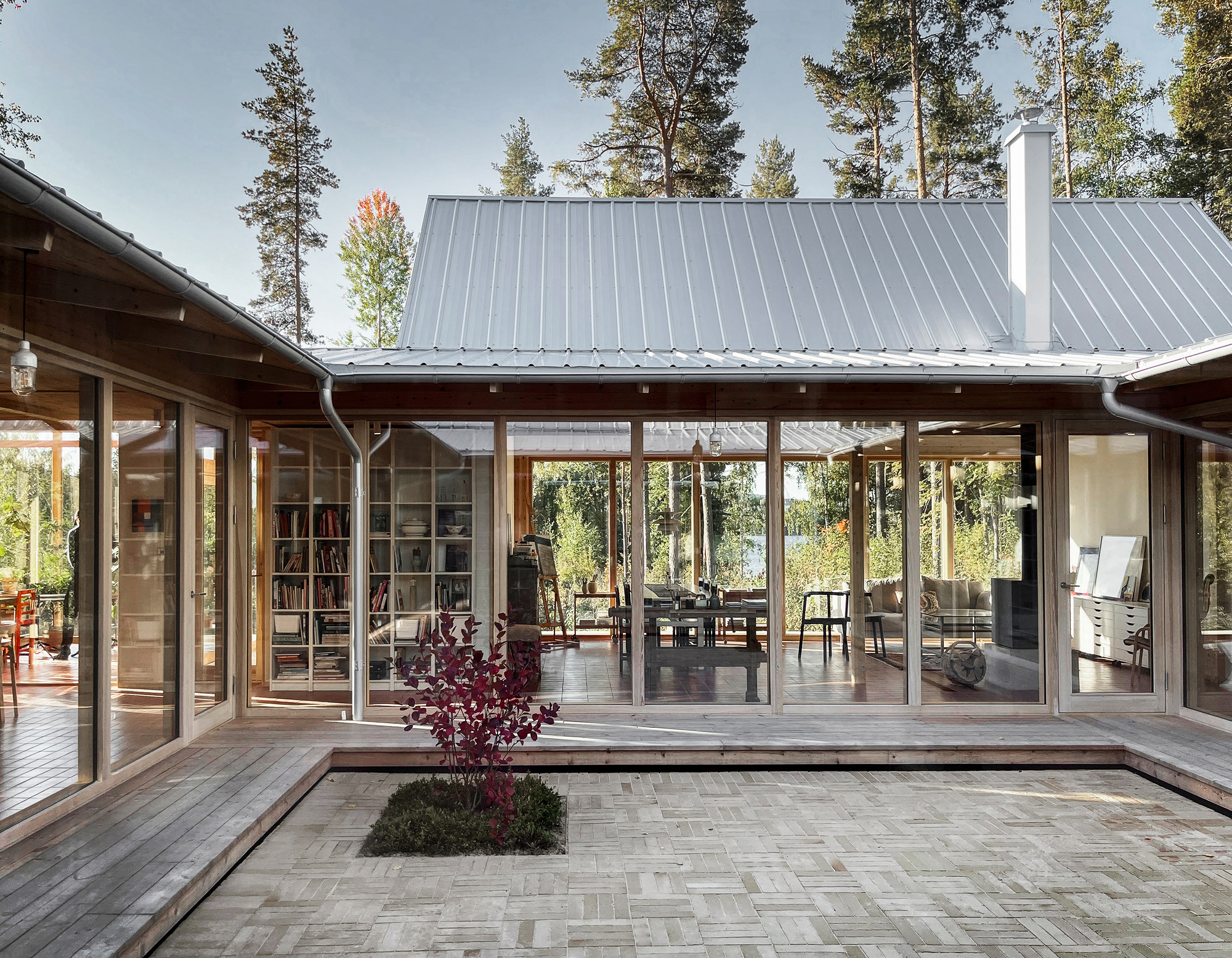
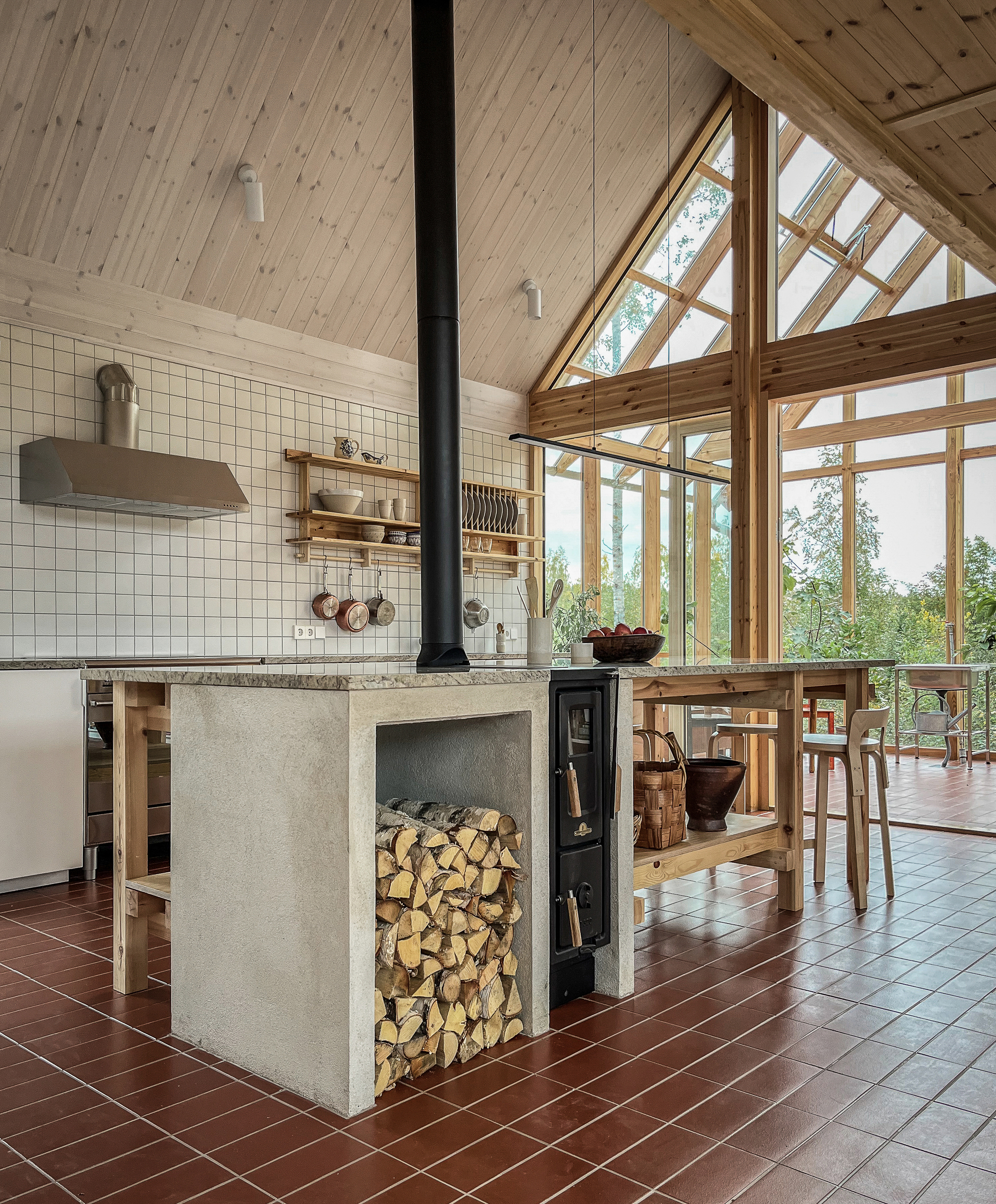
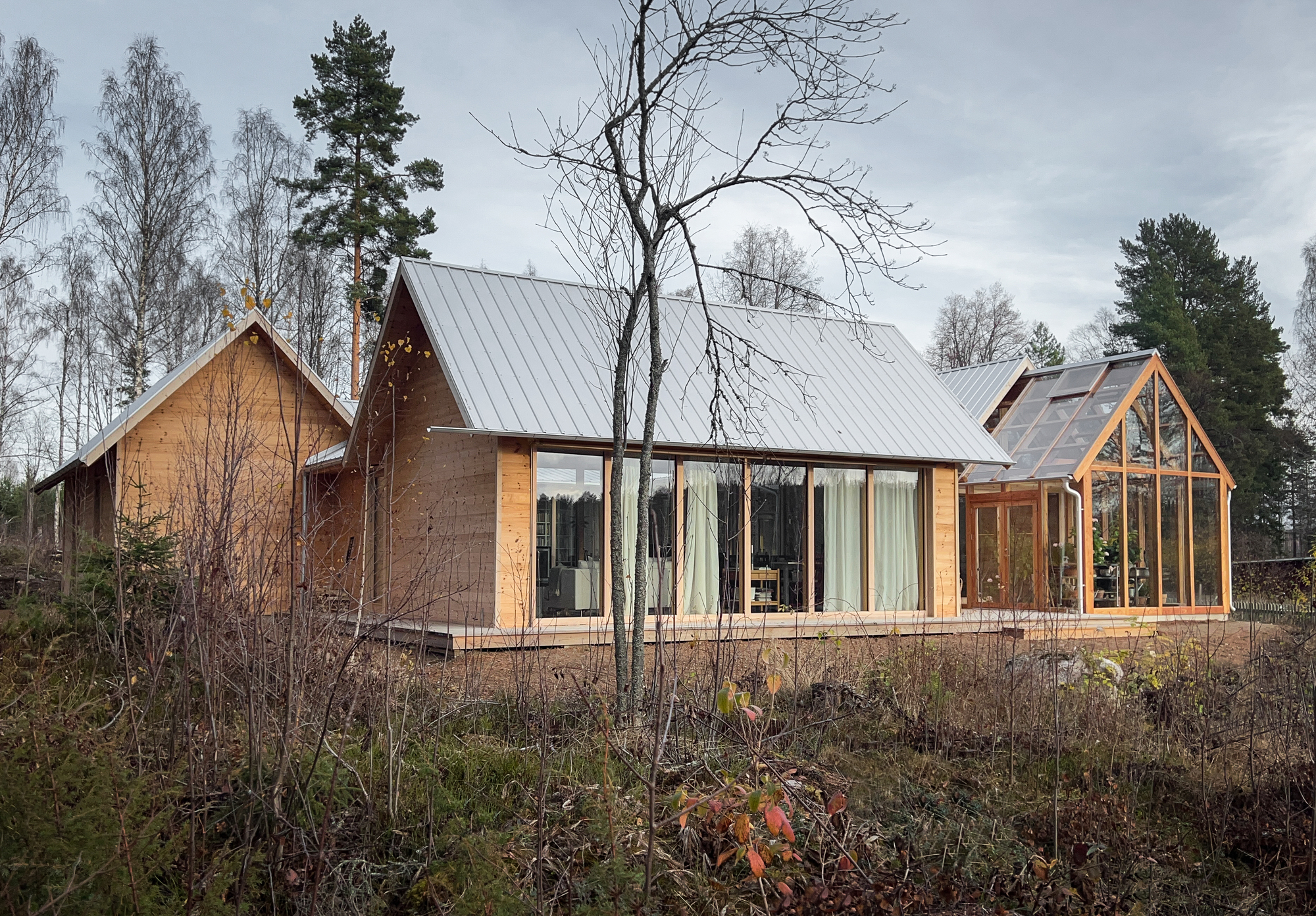
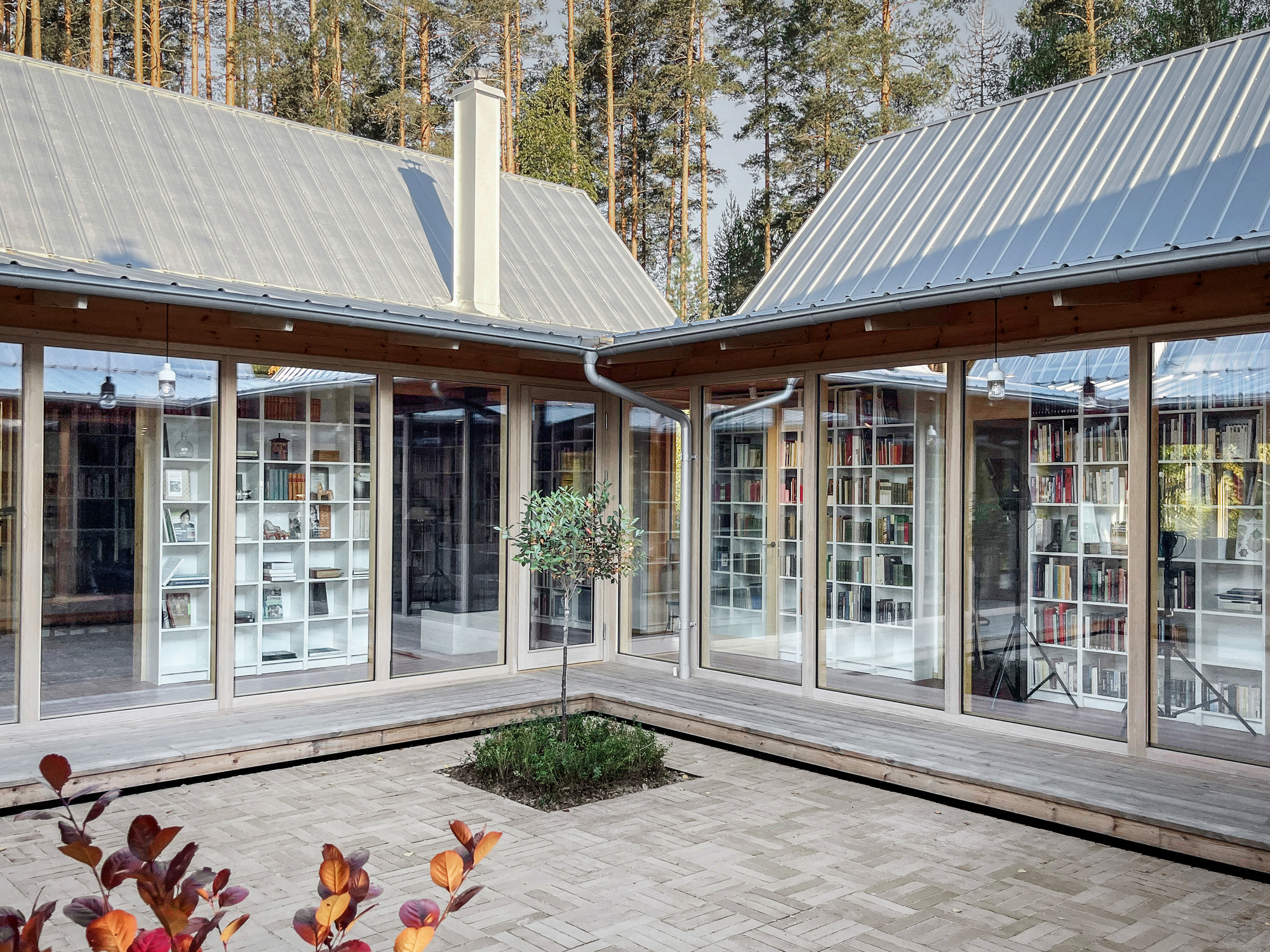
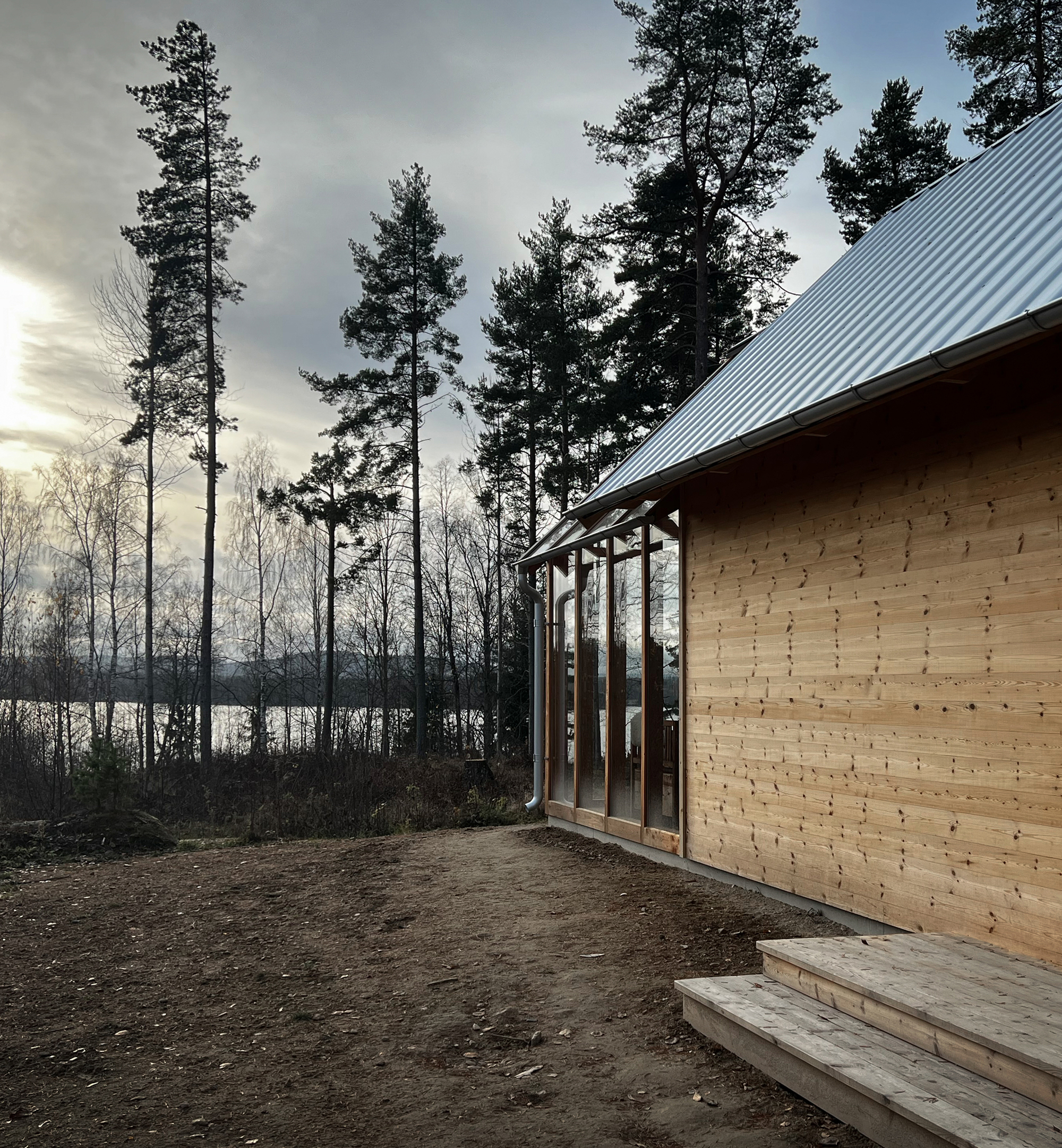
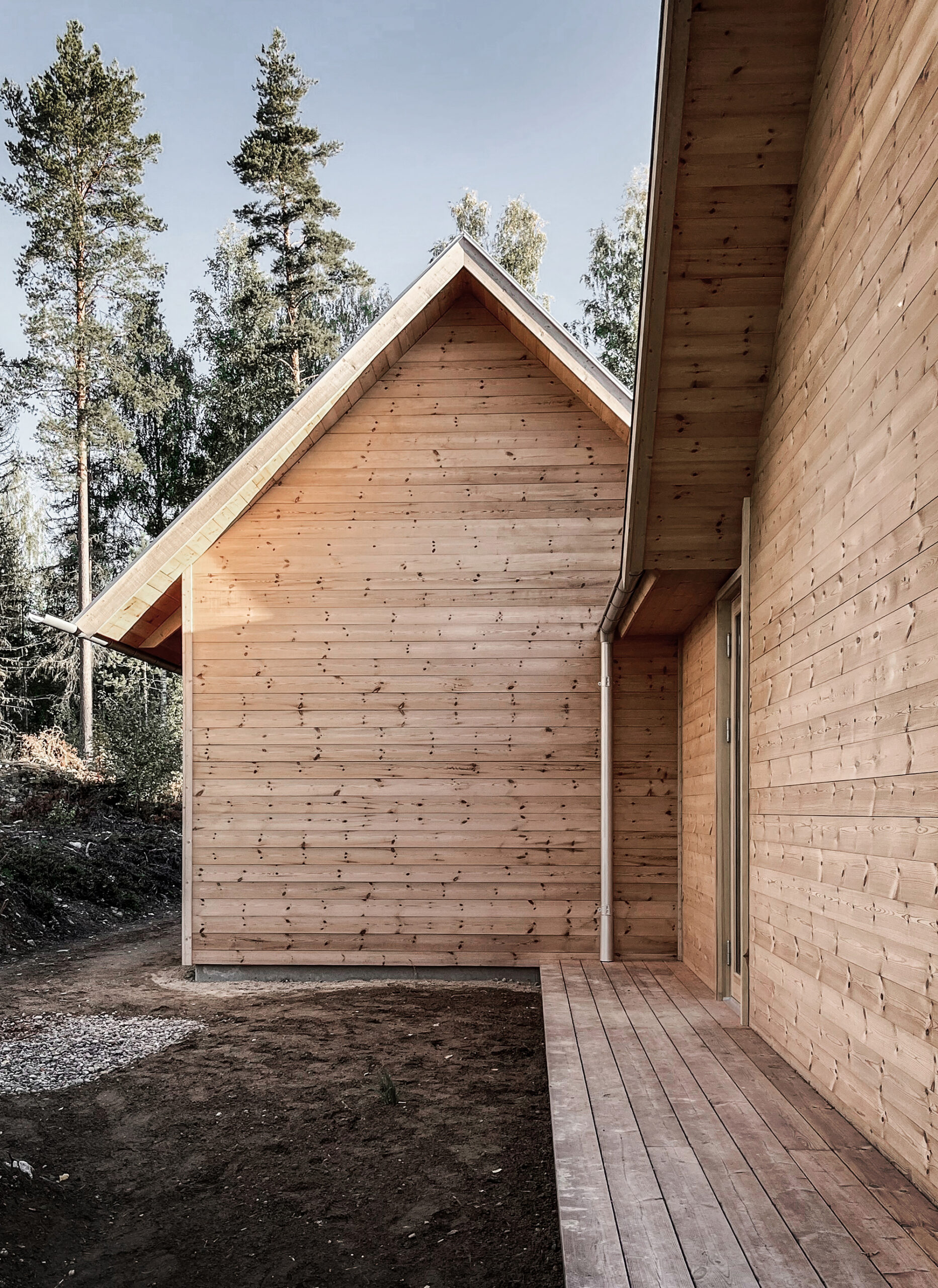
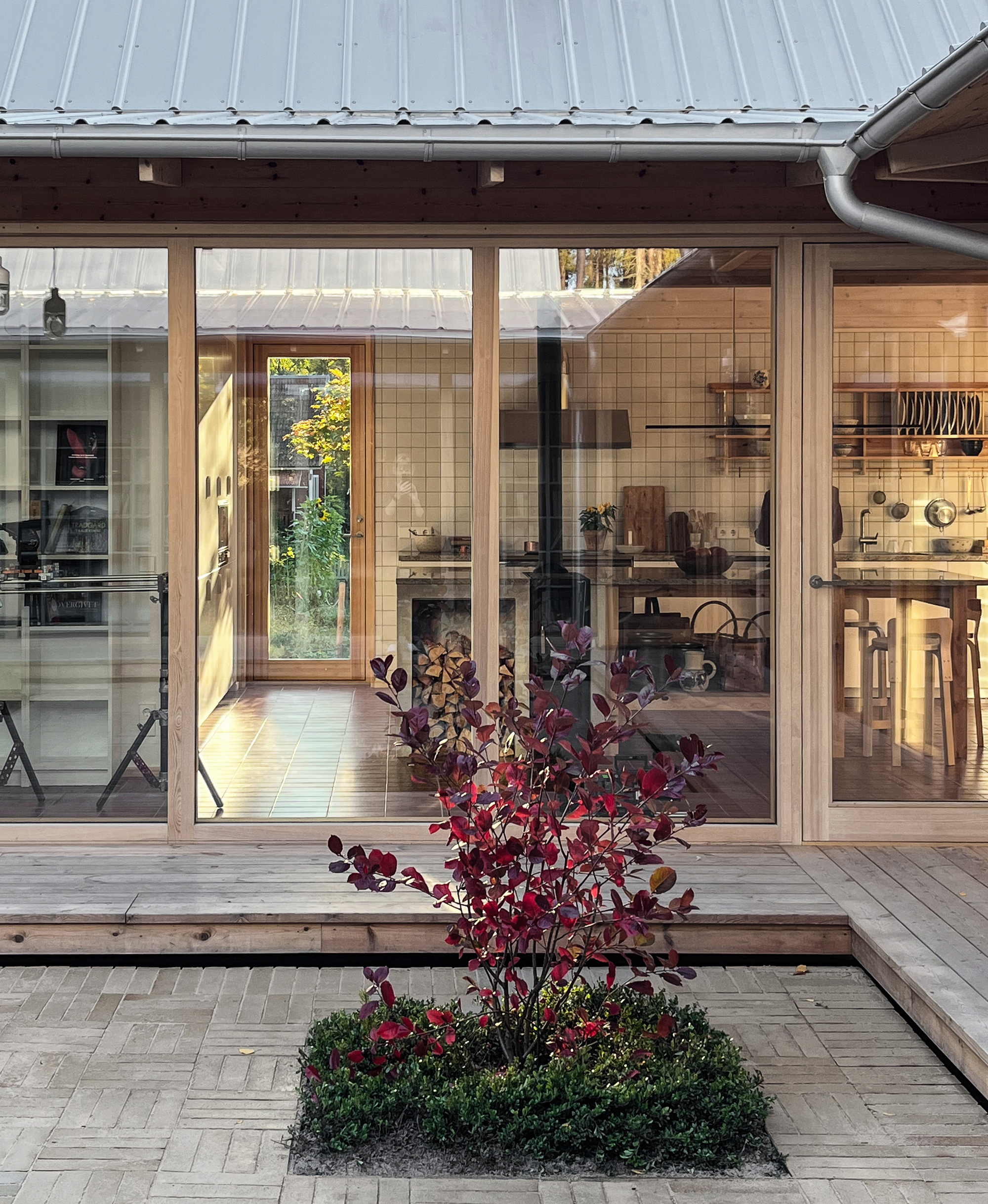
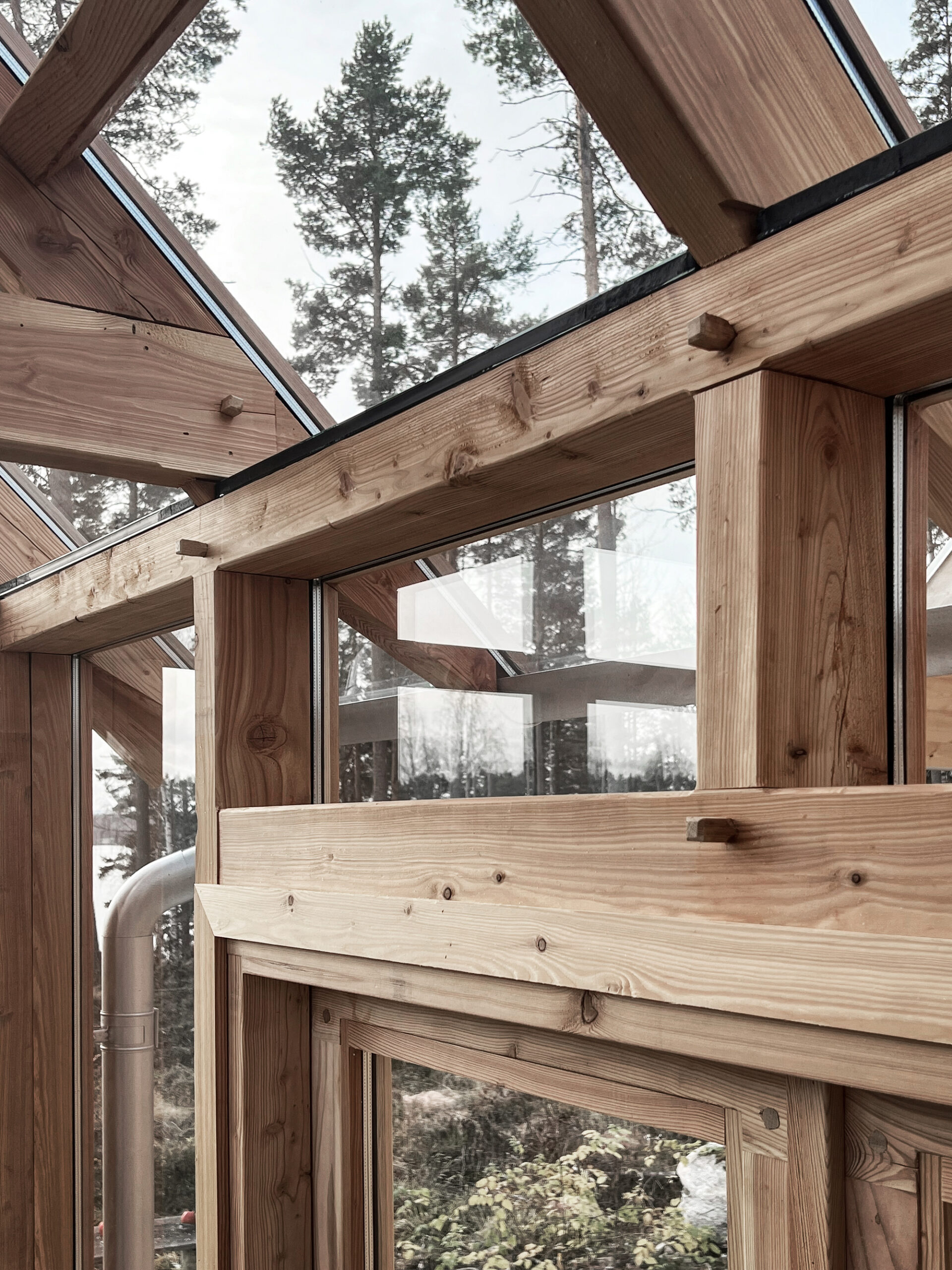
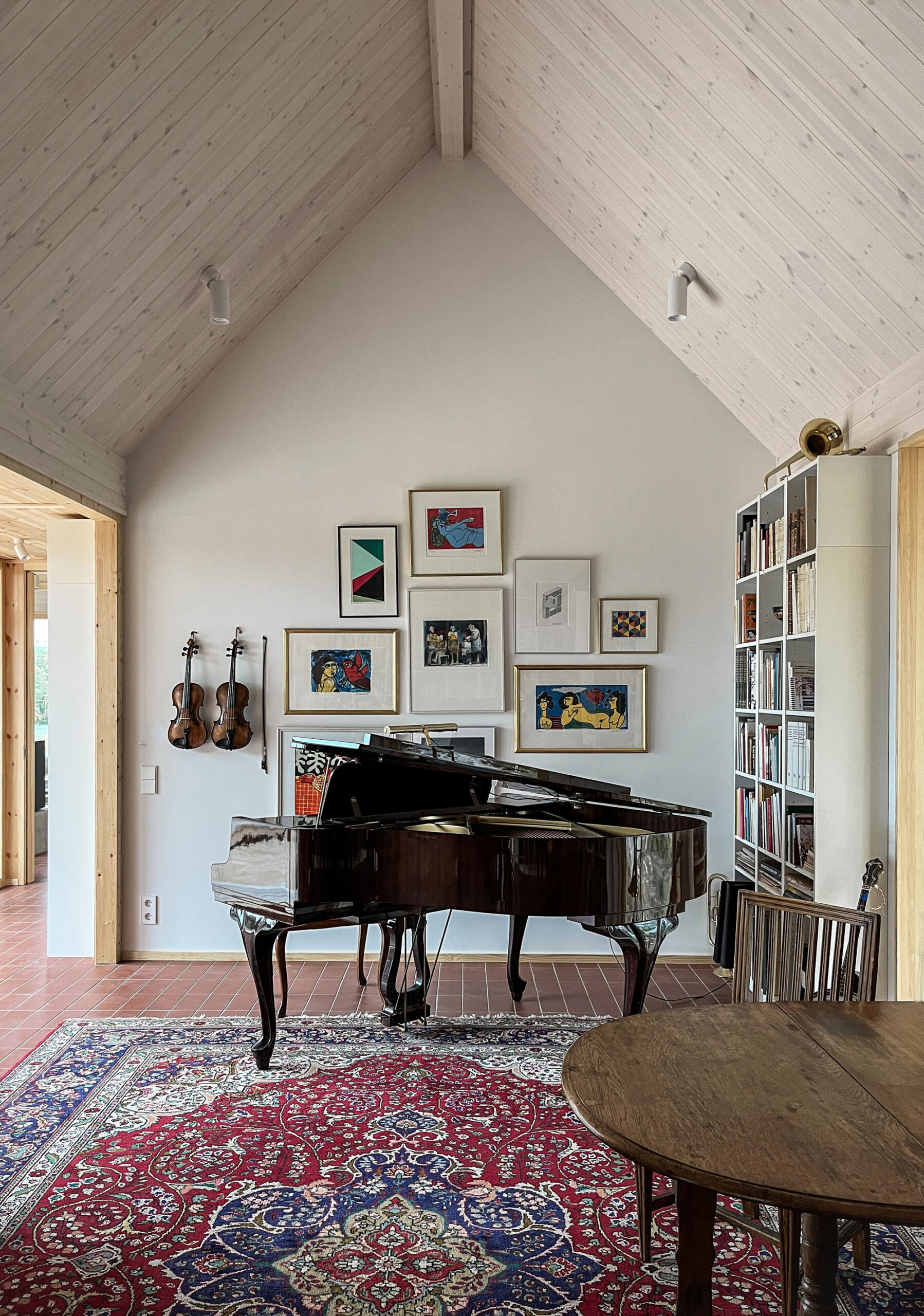
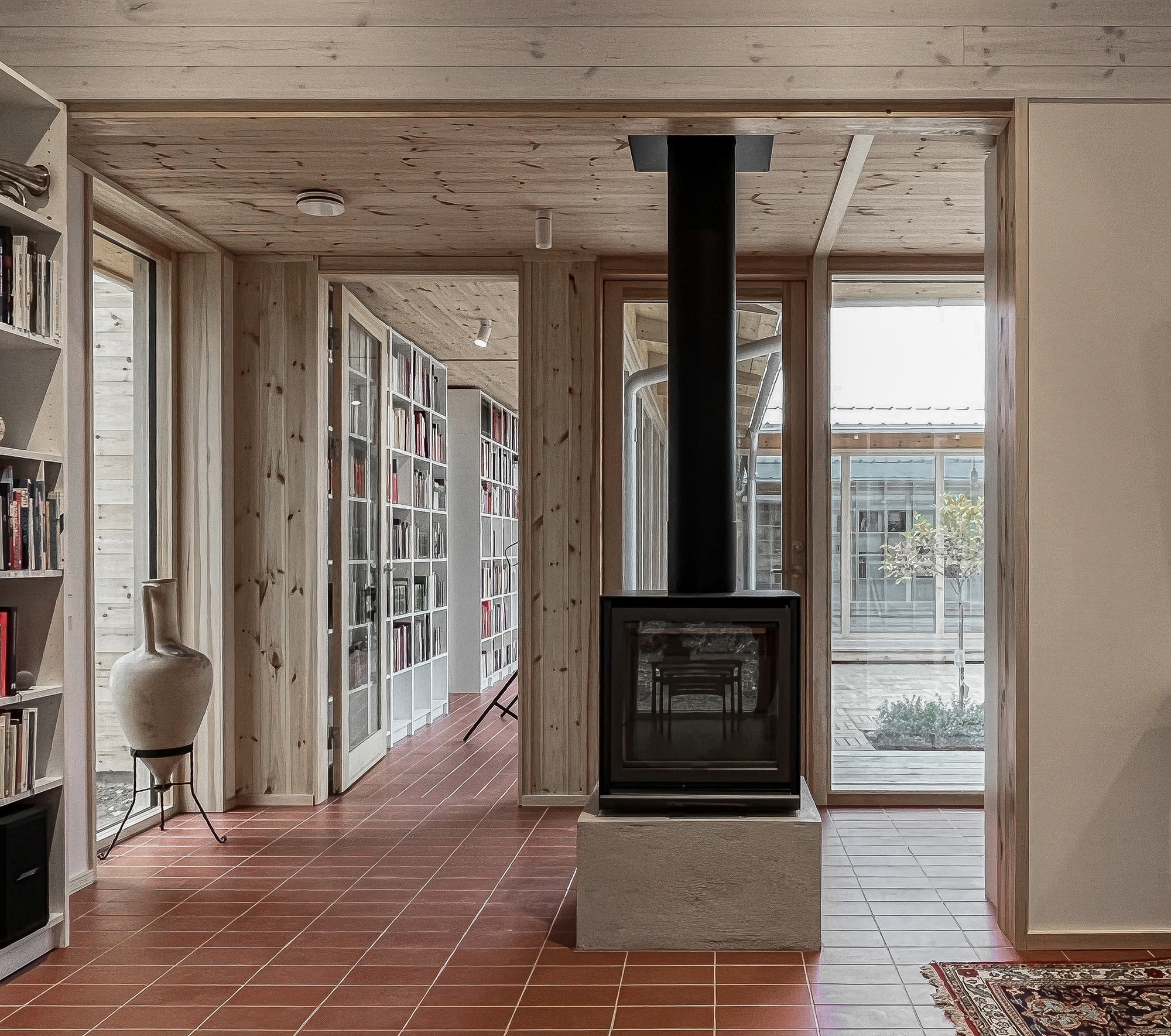
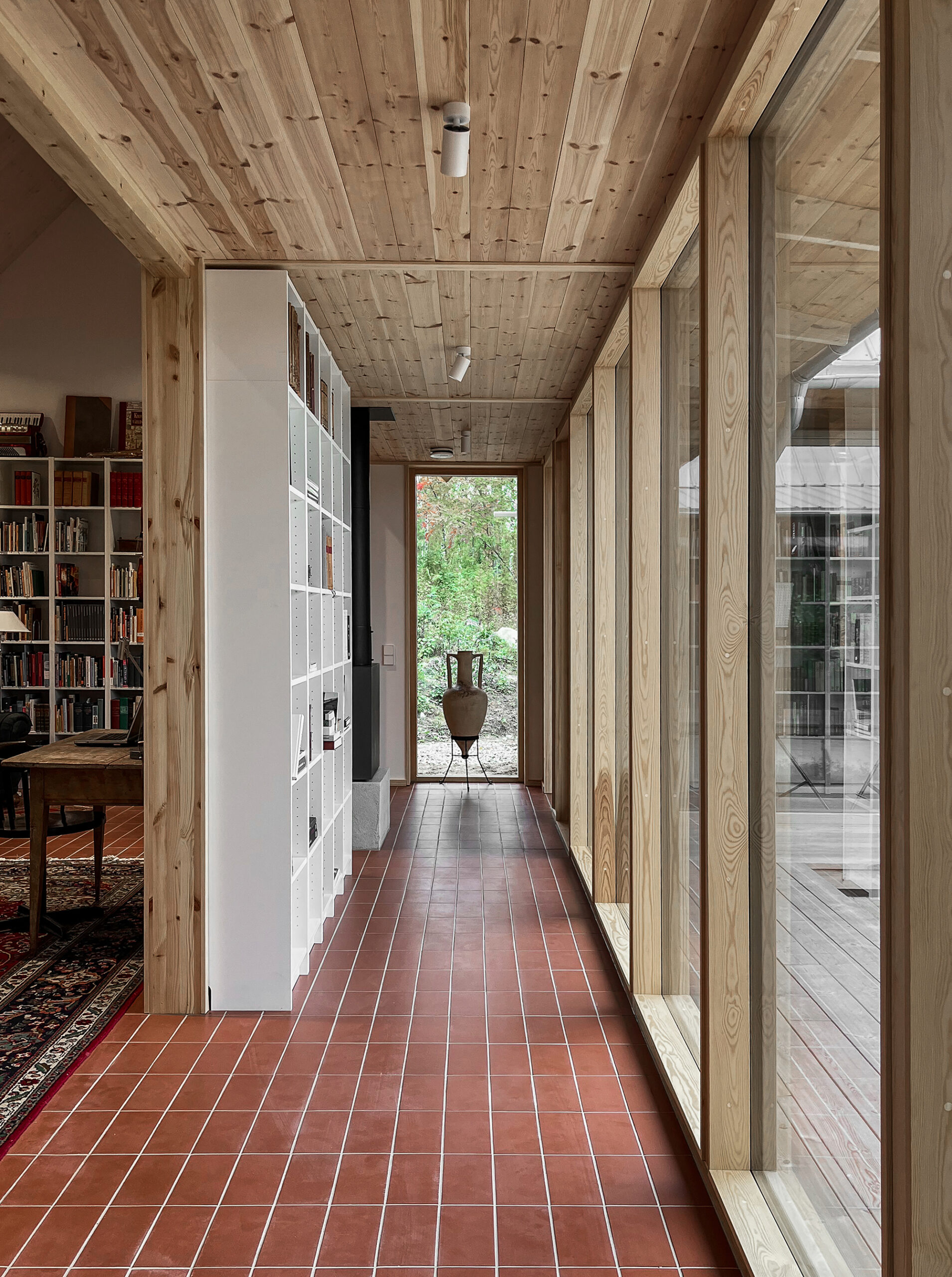
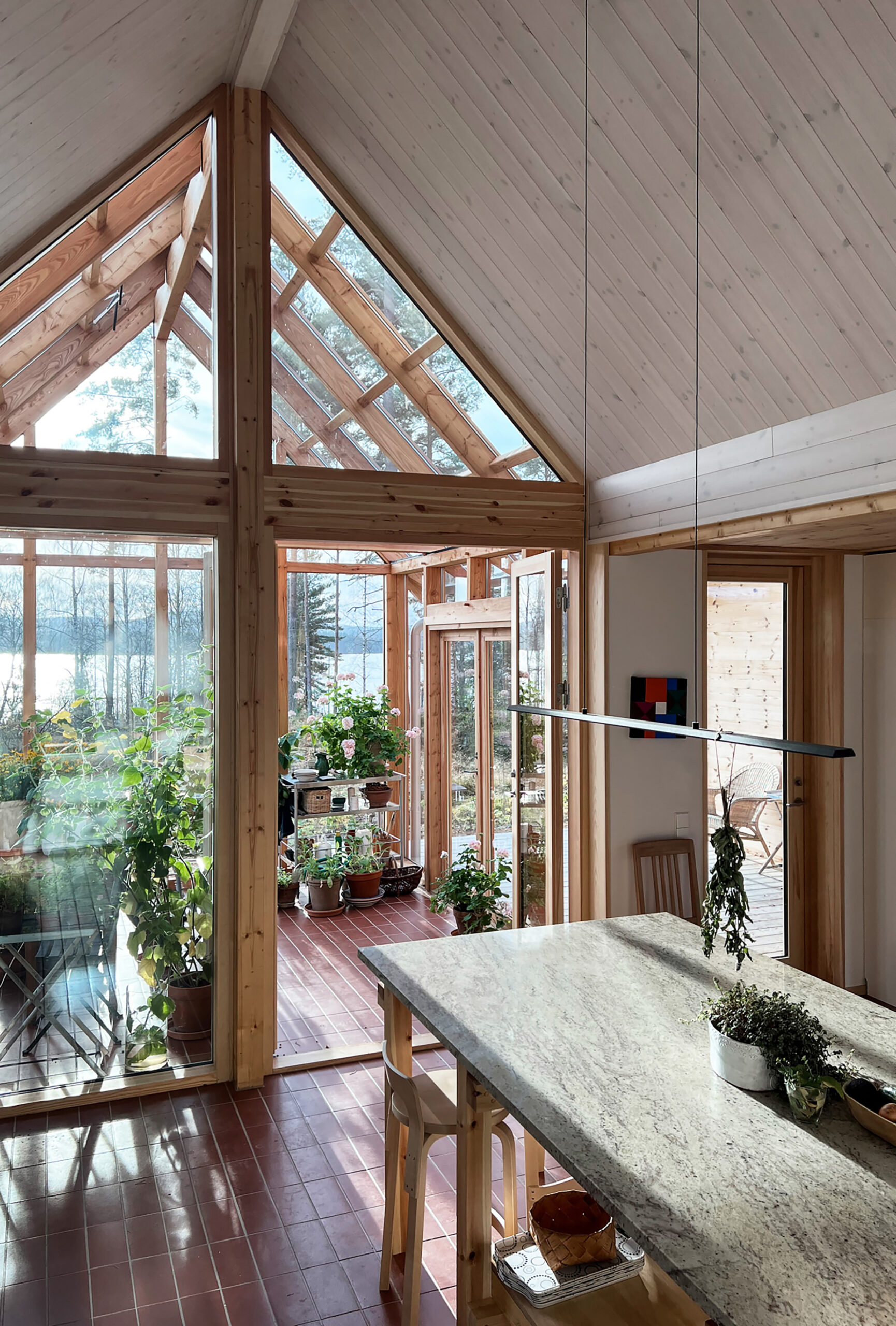
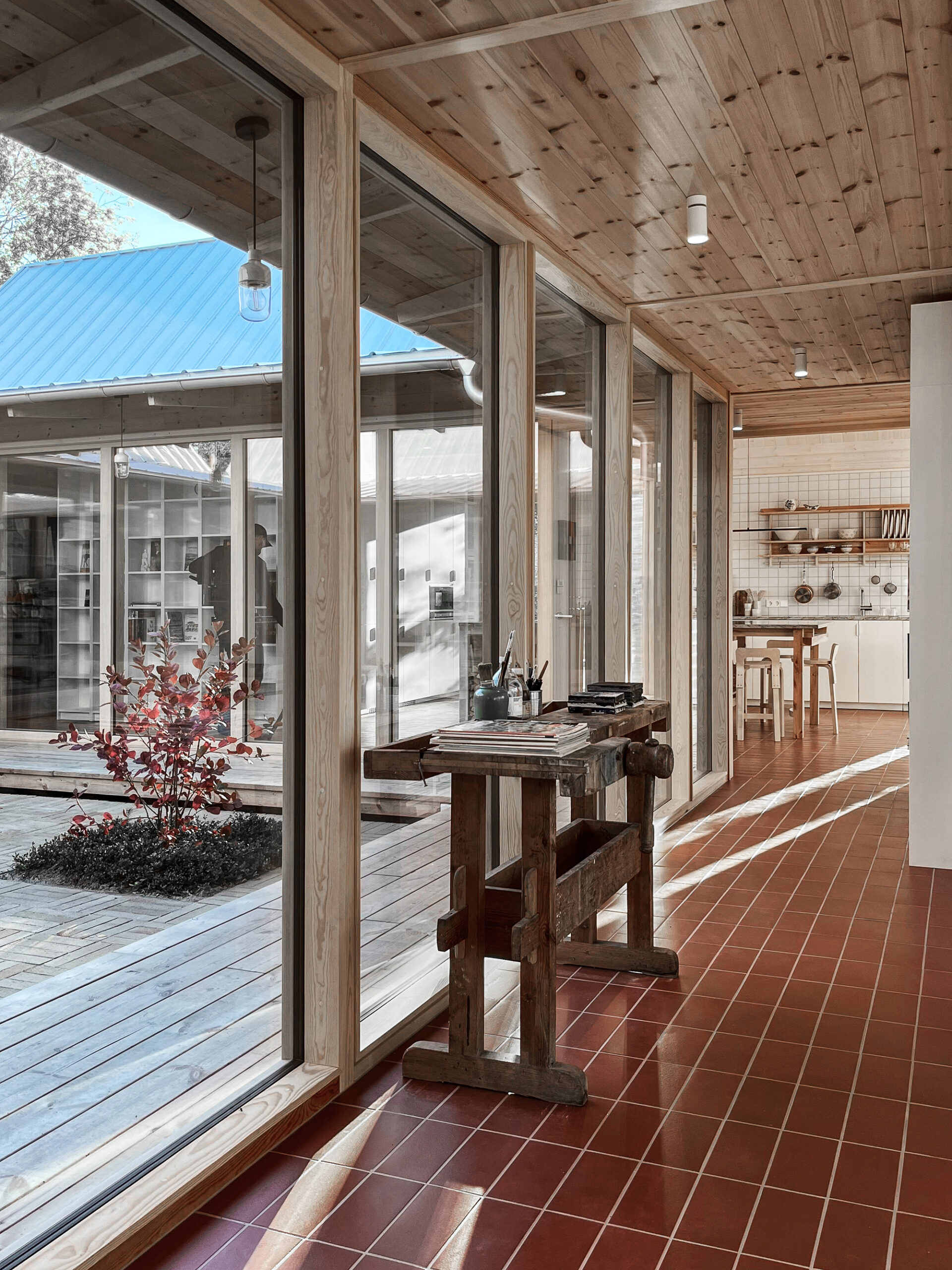
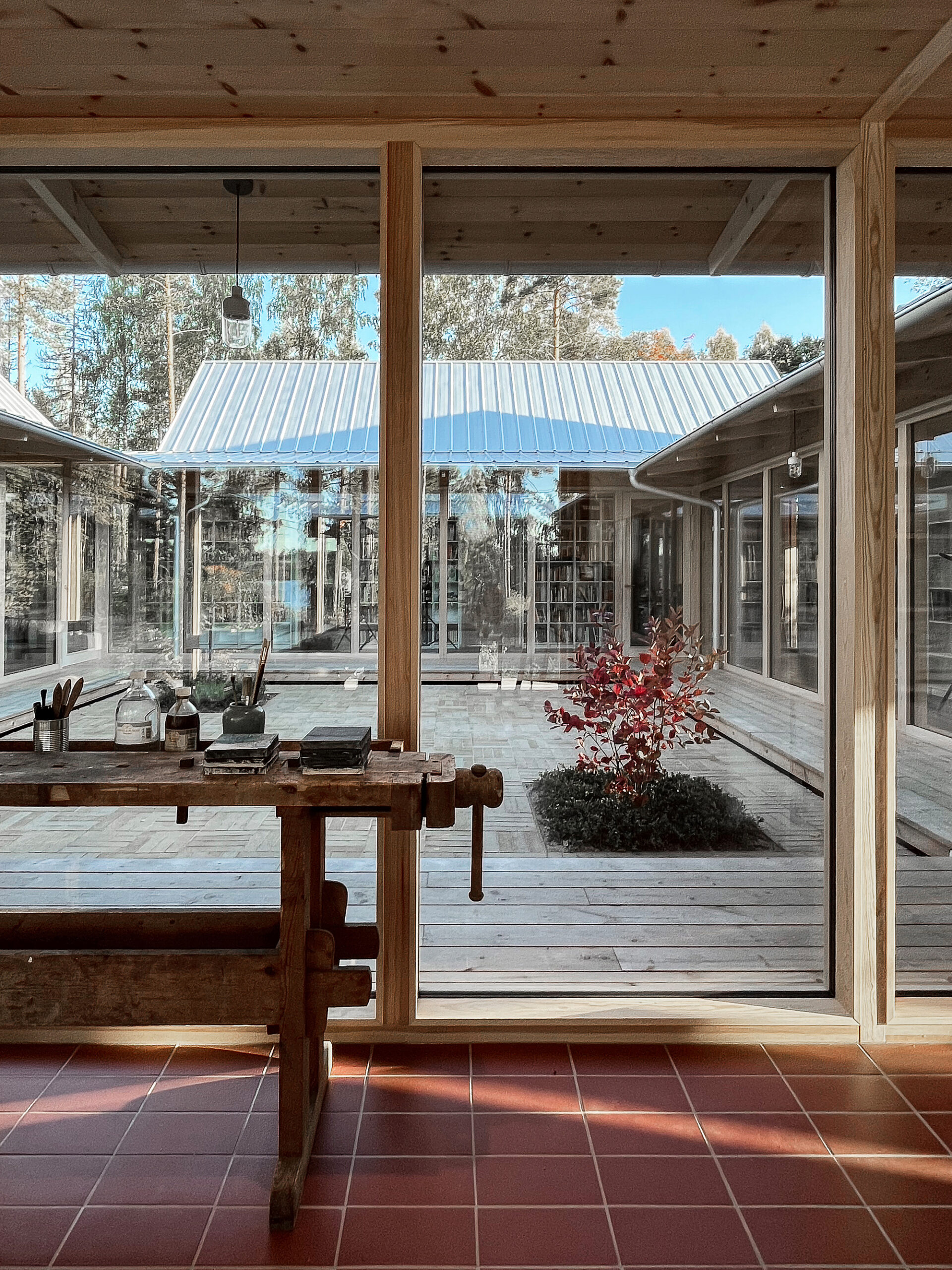
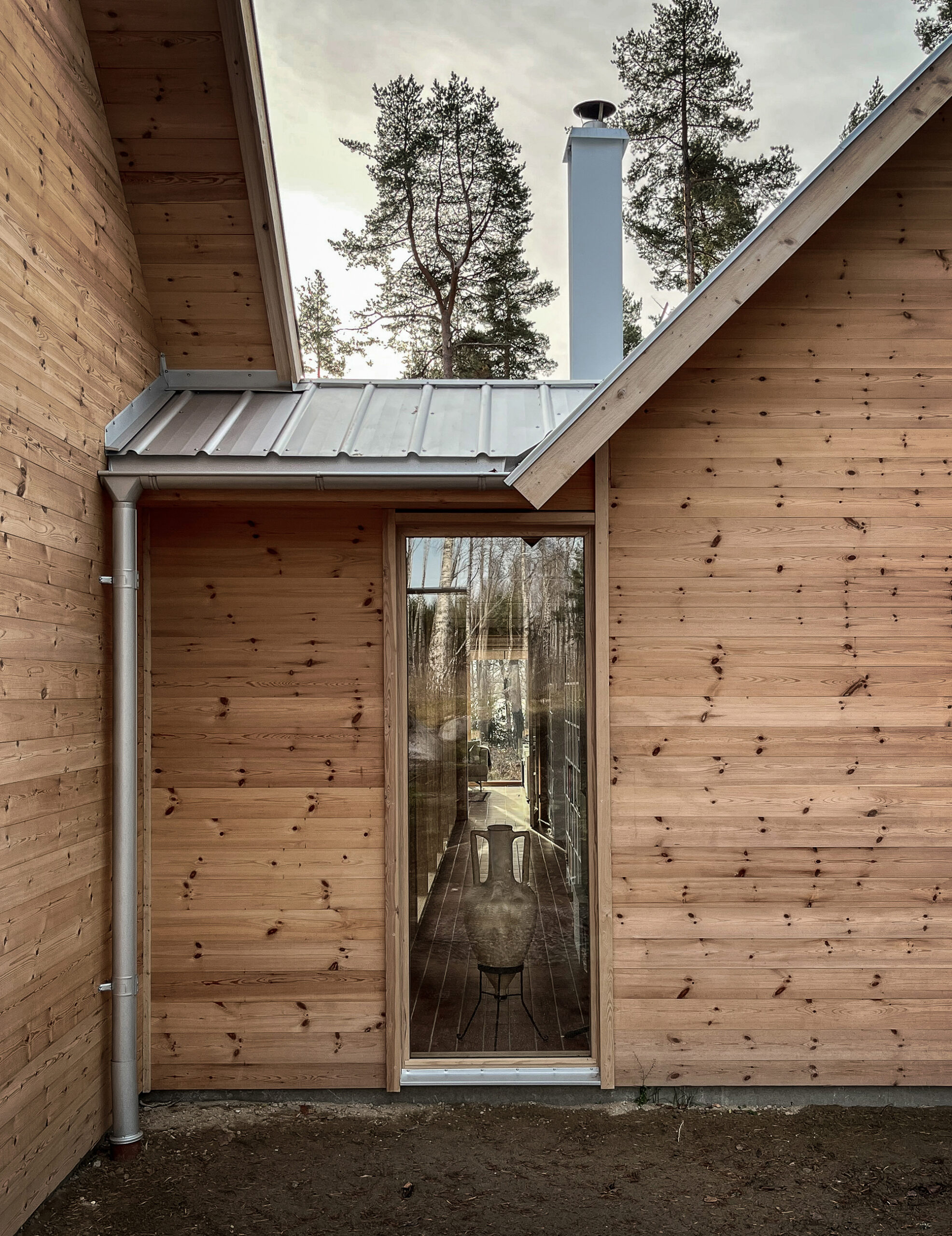
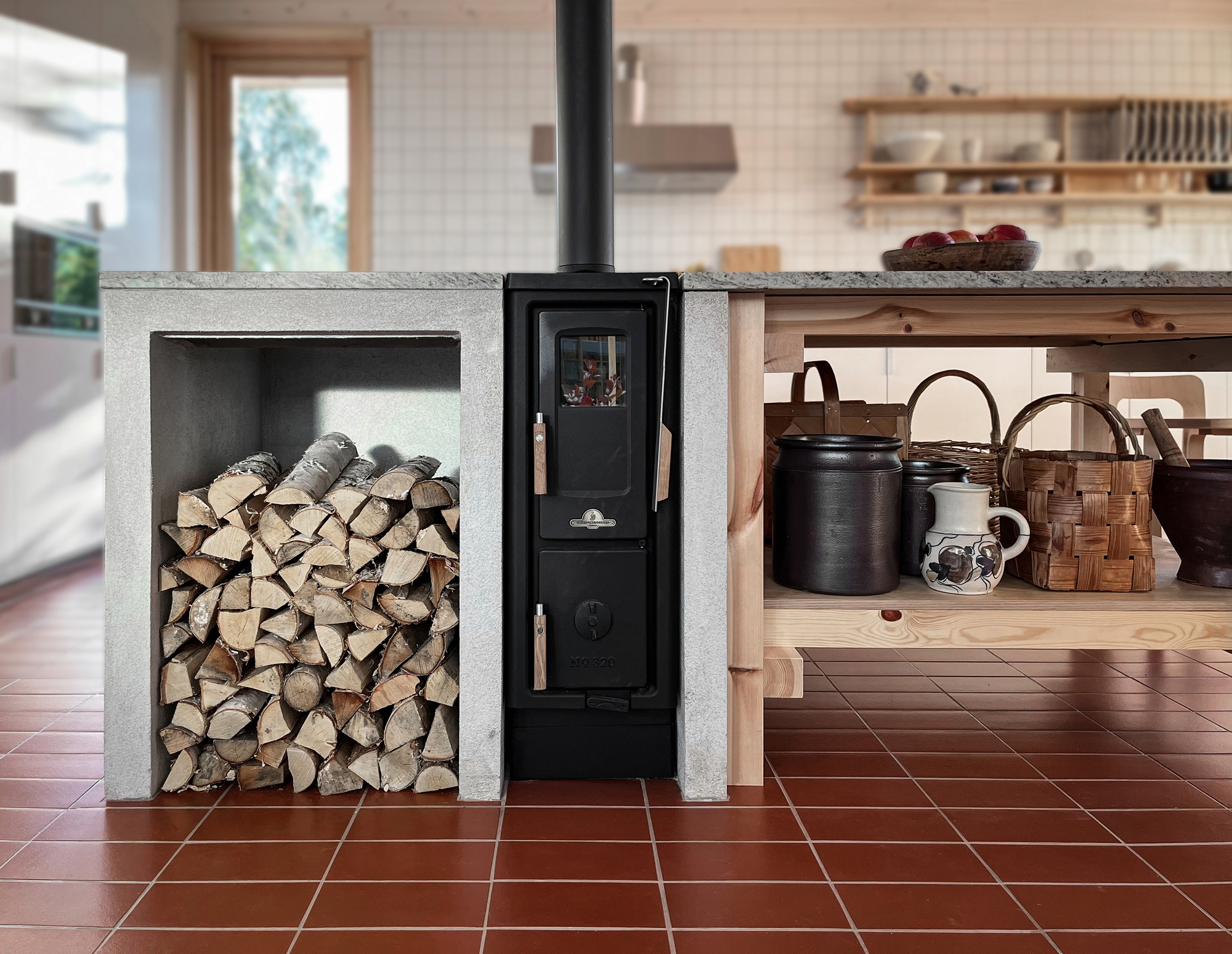
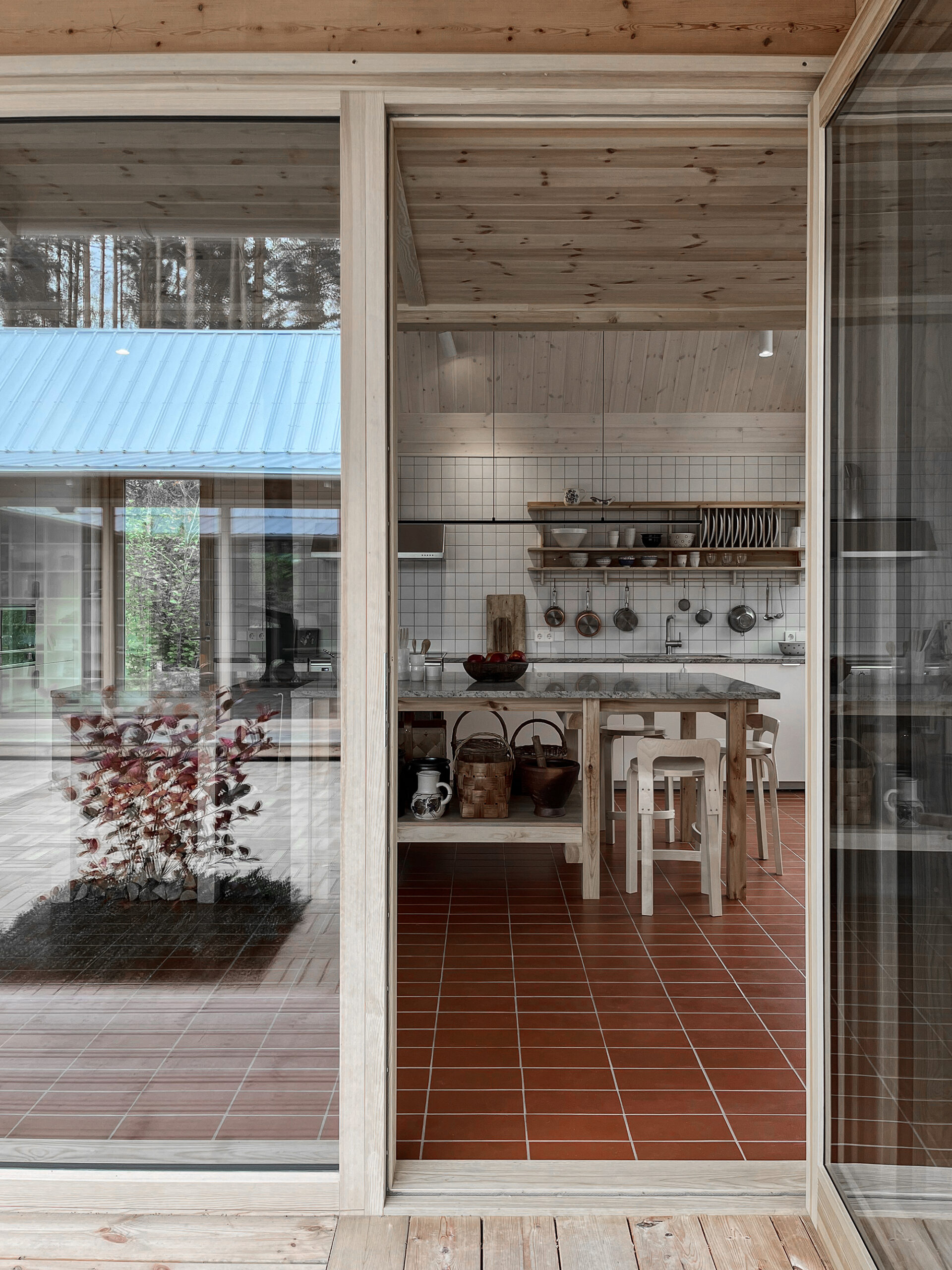
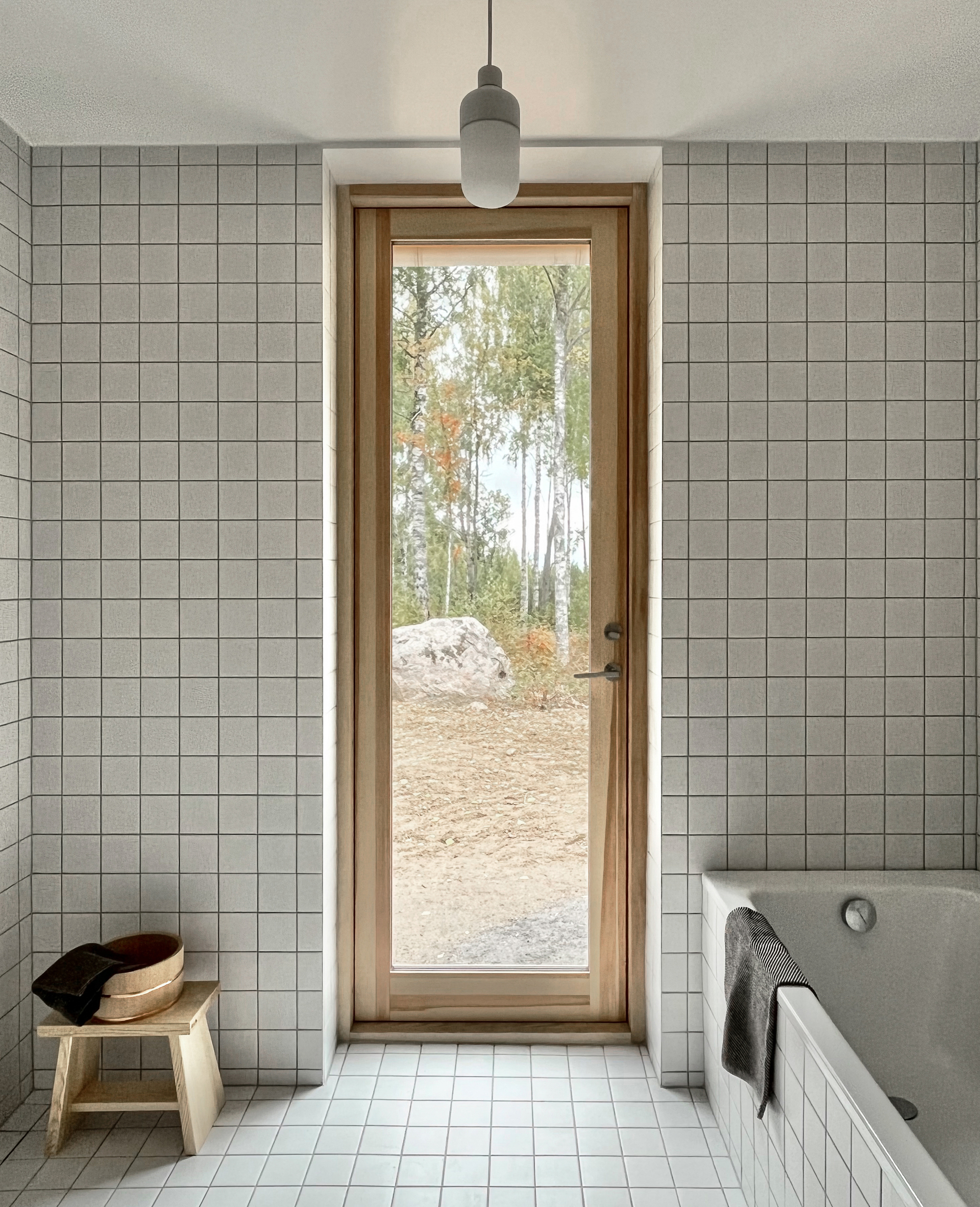
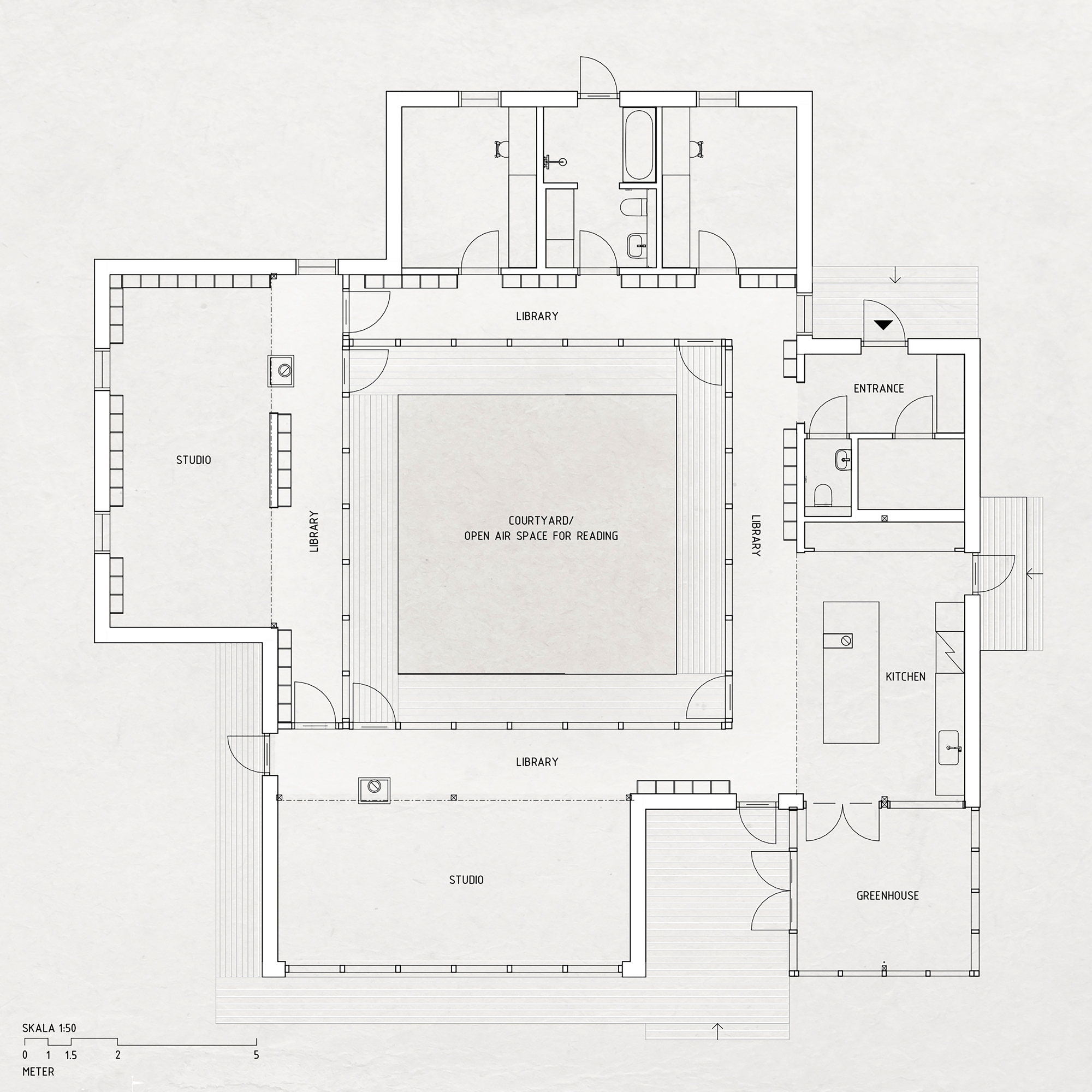
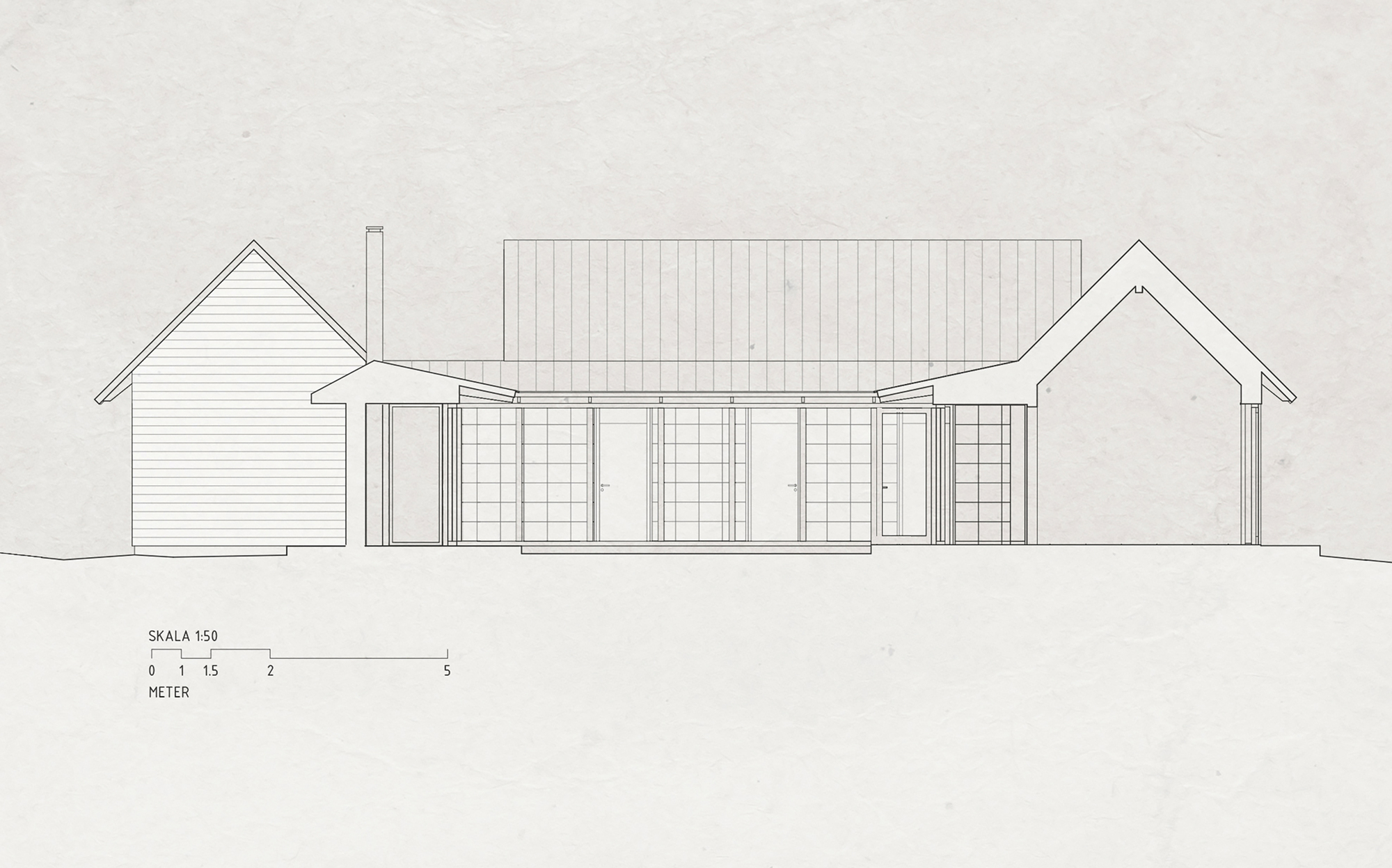
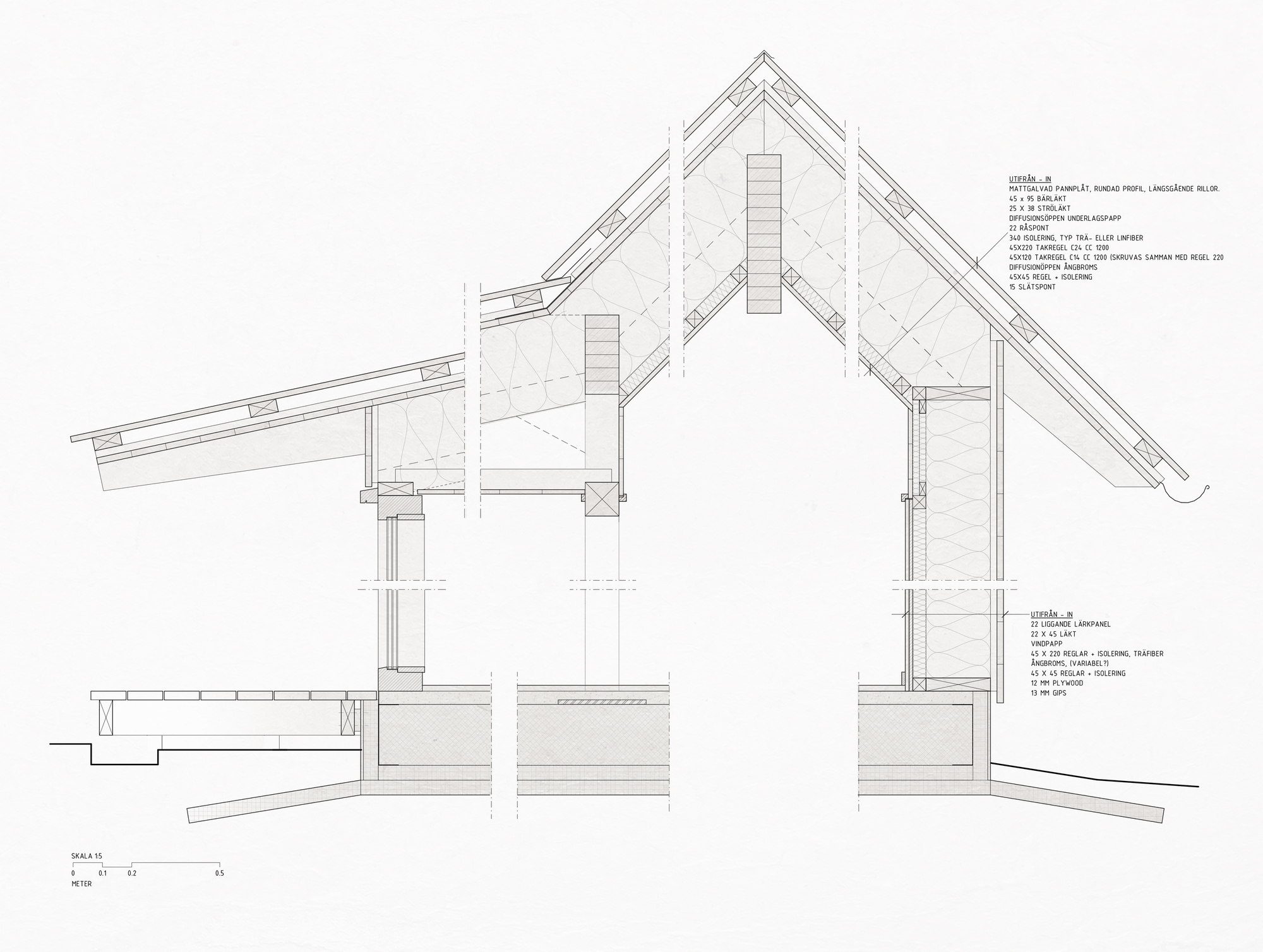
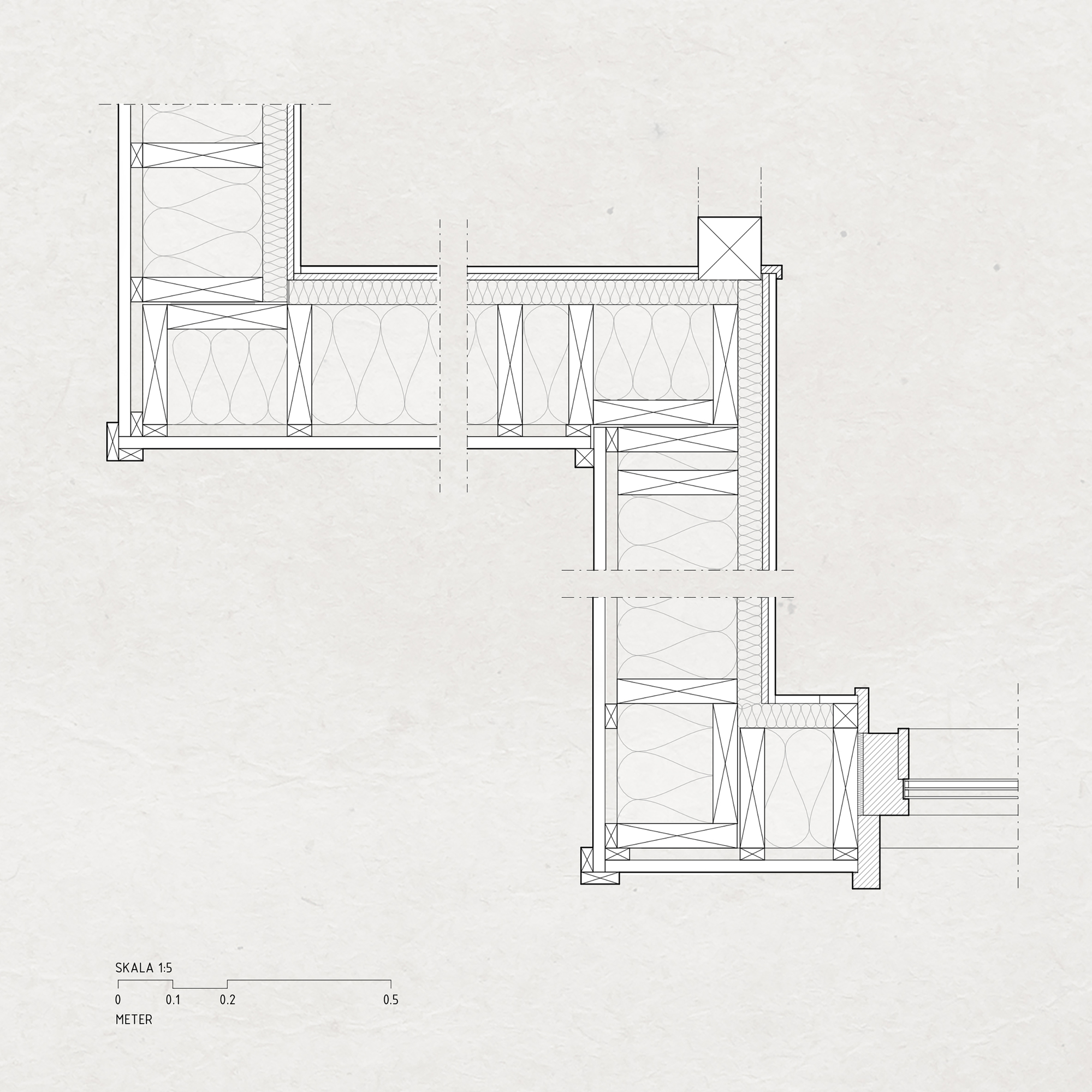
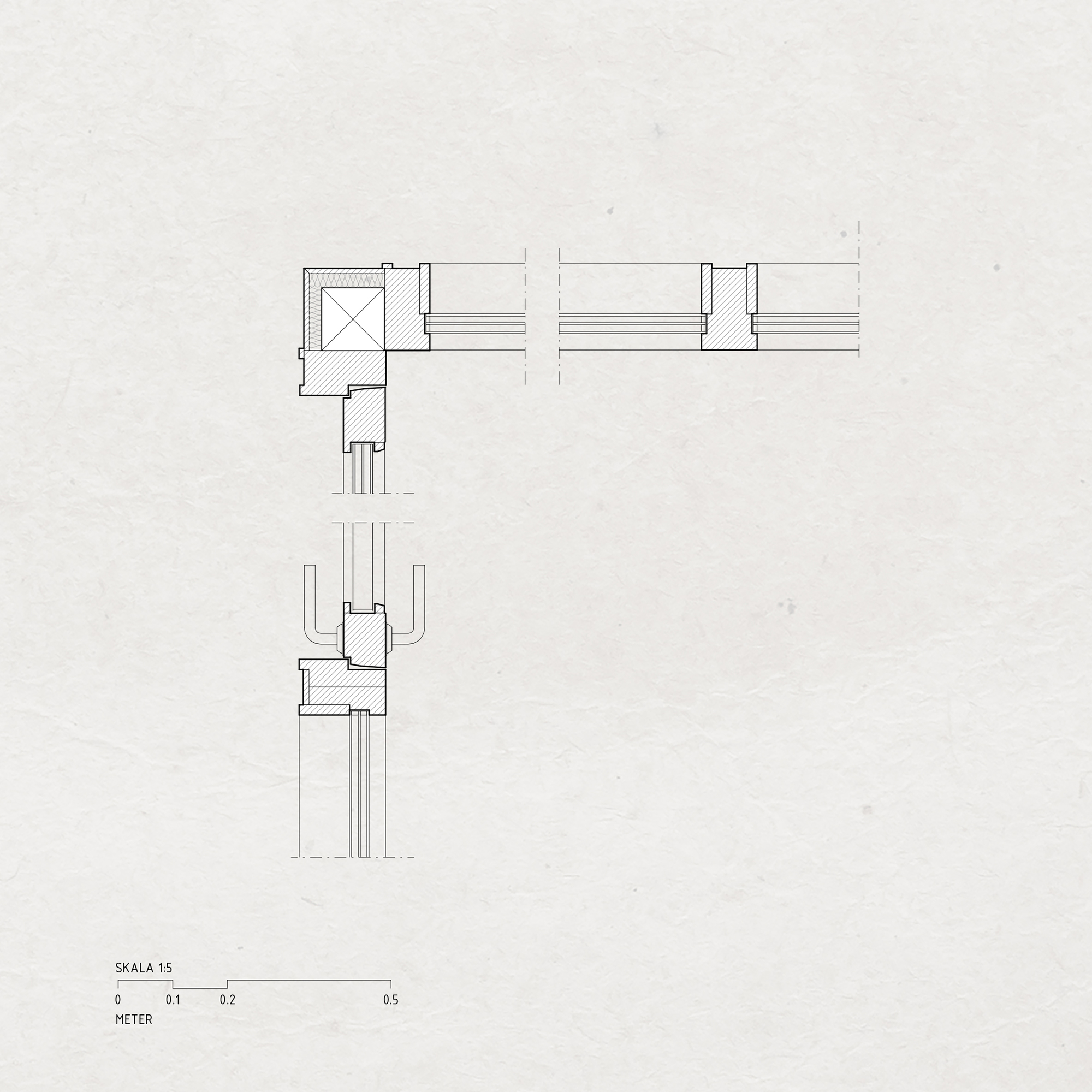
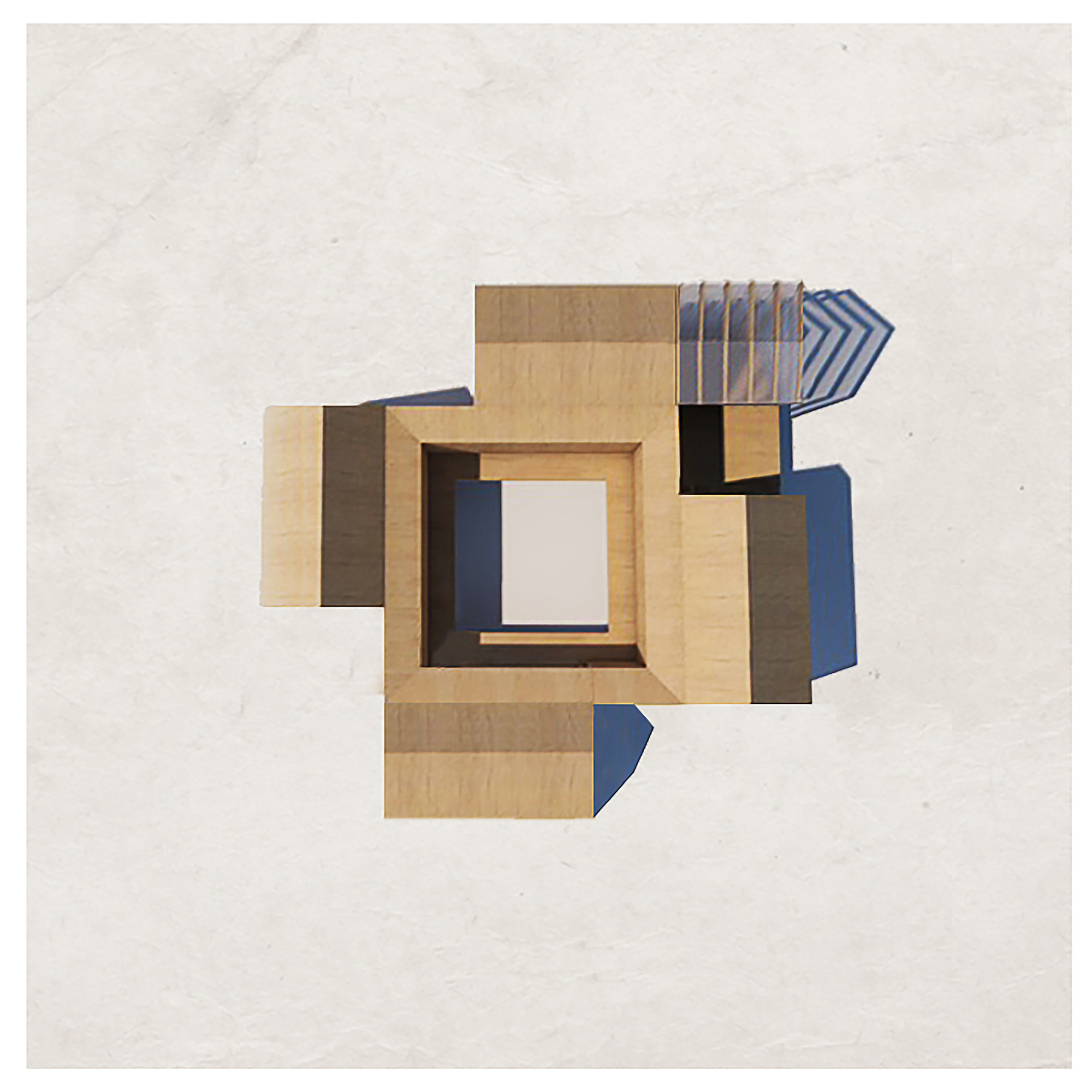
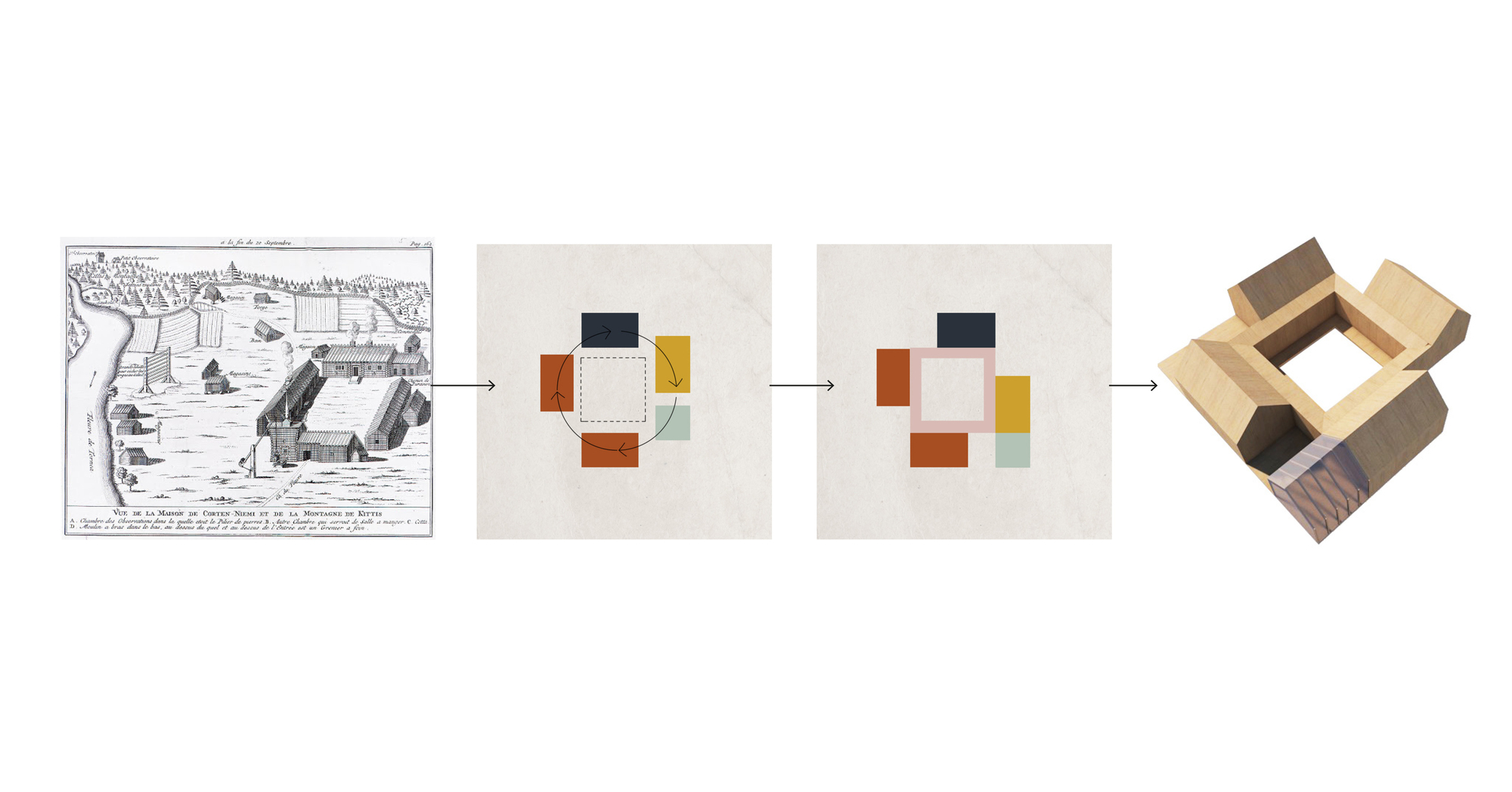









Discussion about this post